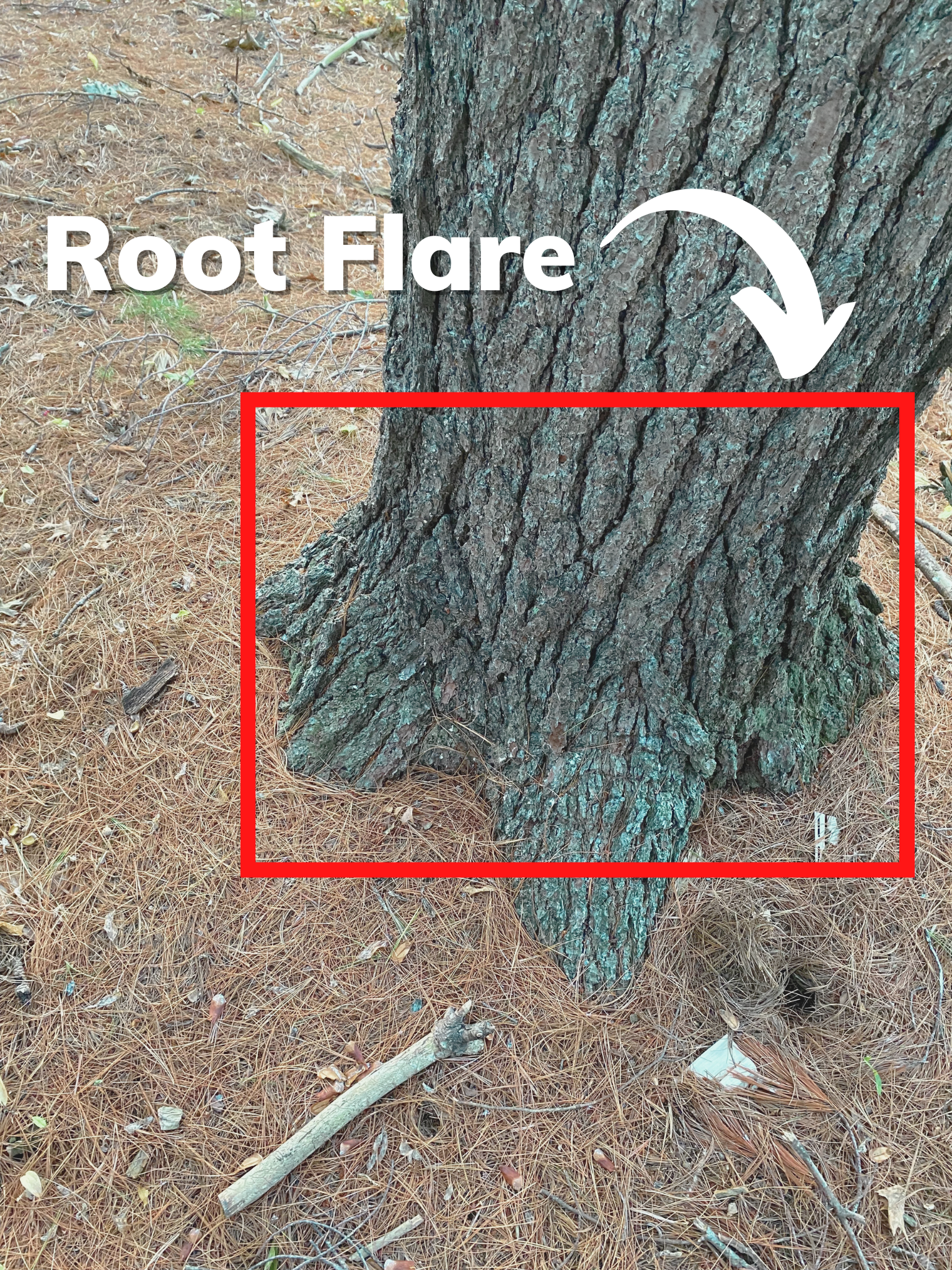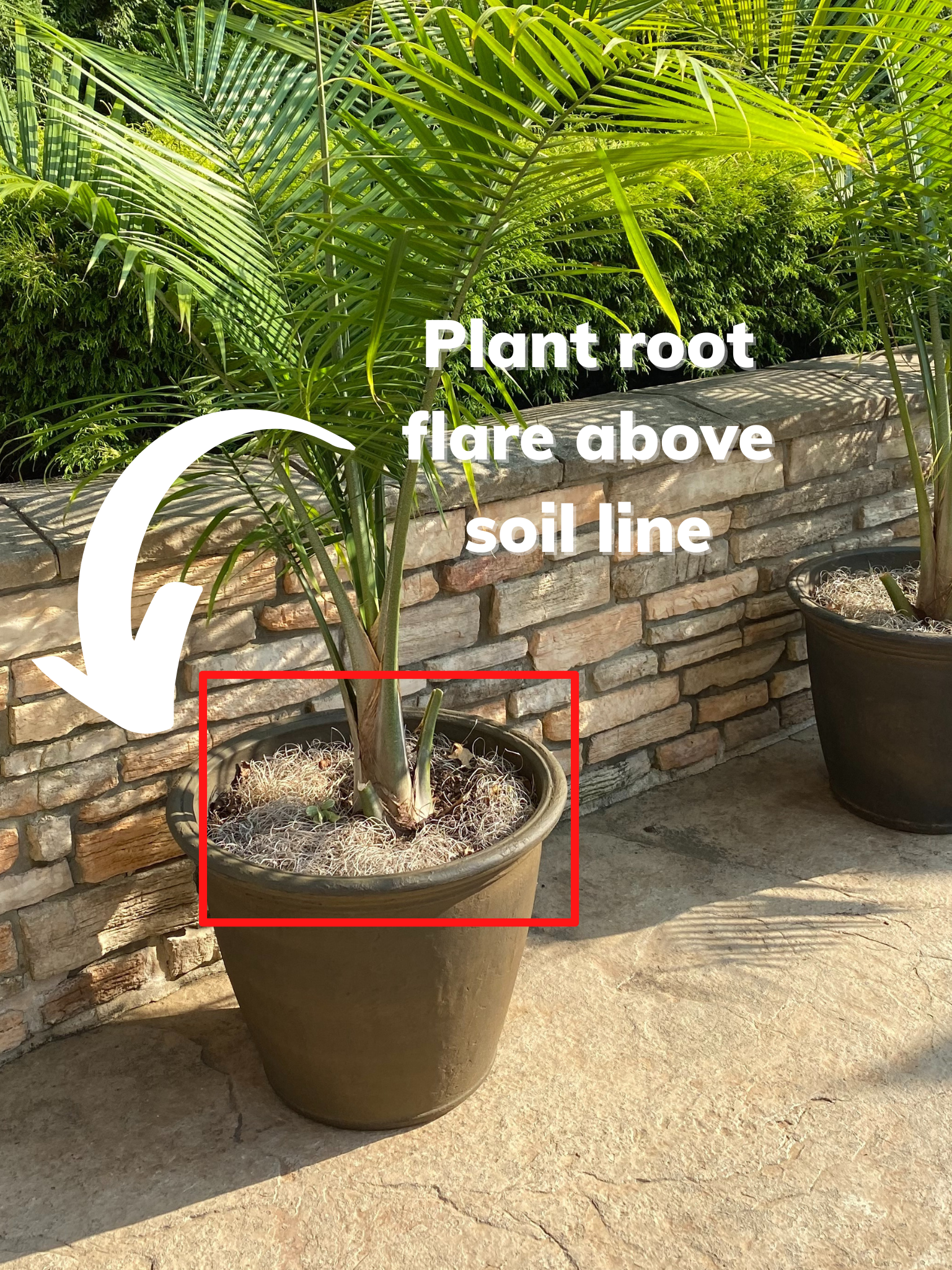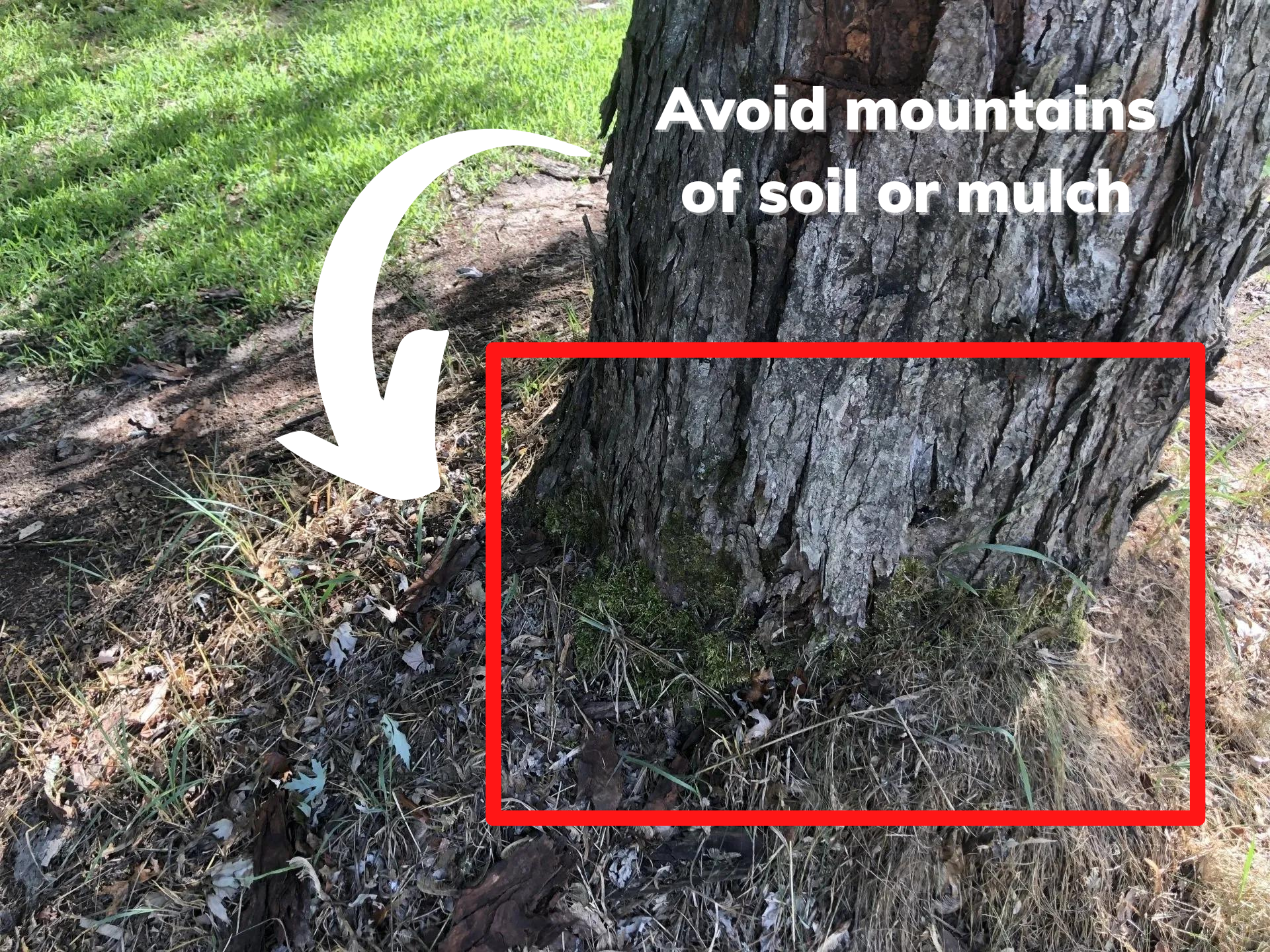How Deep To Plant A Tree?

KEY TAKEAWAYS:
- Plant your tree the same depth as the root ball of the tree.
- How deep to plant a tree equals the distance from the root flare to the bottom of the root ball.
- Planting too shallow or too deep can have life-threatening consequences for the tree.
- No dirt or mulch volcanoes
Table of Contents
Planting a tree too deep or too shallow is a serious blunder that most beginners make that can negatively affect the lifespan of a tree (if it can grow at all).
Worry aside, planting a tree at the correct planting depth is a simple process even if you plant your tree on a steep slope. Here's everything you need to know.
How Deep To Plant Your New Tree
Plant your new tree at the same depth as the root ball. To find the true depth of the root ball, measure the distance from the root flare to the bottom of the root ball.
Make sure that the root flare at the base of the tree trunk is slightly exposed above the soil surface.
A lot of people will plant the same depth as the burlap sack a new tree can come in. This is not the way to do it. Once you have your planting site selected, take the appropriate measures to set your tree (and yourself) up for success.
How Wide To Make The Planting Hole
As we just said, the right depth of the hole should be the same depth as the tree's rootball with the root flare just above the surface.But the width of planting hole is going to be 2 - 3x the size of the ball around.
Digging a planting hole any wider than that is just unnecessary. Try to avoid digging excess soil if you can. Make sure you bring the right tools for planting trees.
How To Find A Tree's Root Flare

The root flare is where the bark ends and the root system begins. To find it, you simply trace along the tree down to where the tree roots start. You need to find the spot where the tree trunk starts to widen out into the root system. Sometimes the root flare can be buried in the root ball.
What If The Root Flare Is Buried In The Root Ball Already?

This is a common issue. Many times gardeners receive or purchase potted trees that are buried a bit too deep in its root ball.
If this happens, with your hands or a smooth tool, gently scrape away at the top of the ball being careful to untangle any small roots you unveil. Only take enough to expose the foot flare. When you find it, measure the distance from this spot to the bottom of the root ball. That's the depth you need to plant at.
Be patient here. The root flare can be over 5" deep with some of these store bought trees. If you scrape off a little too much, that's okay because you are going to replant the tree anyways.
Remember: do not assume depth of the root ball you purchased is the accurate depth to plant the tree. Find the root flare, and then measure to the bottom of the ball. If you don't feel confident doing this, then you should contact a professional.
Avoid Mountains of Soil!
When you get the tree in the earth, make sure you don't cover up the root flare with a mountain of mulch. This can stunt the tree's death and shorten it's lifespan!

FAQs
Planting a new tree can be scary. If you aren't comfortable, don't be ashamed to call a professional. Planting a tree right can set your house up to have beautiful aesthetic, privacy and so much more. It's an investment.
If you plant your tree incorrectly, or if it was planted incorrectly long ago, and the tree starts to have those issues like rot or infestation, it's probably already too late. At that point, the tree may not be savable and could have to be removed from the ground.
So you want to try to make sure you plant your tree correctly. We are sure that if you plant your tree correctly, you will not regret it.
If you enjoyed this article, be sure to check out our guide on tools for planting trees.
Join our community!
Join to receive guides, insights, and the latest gardening deals!
